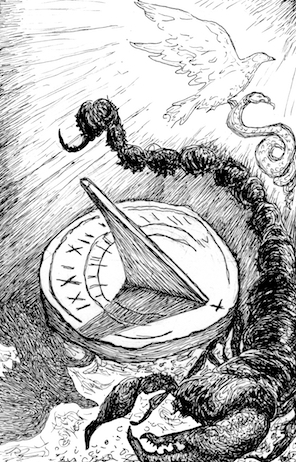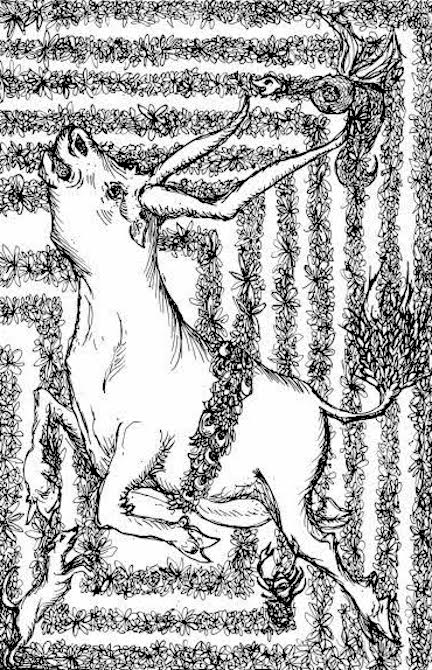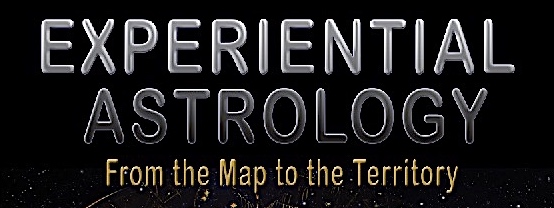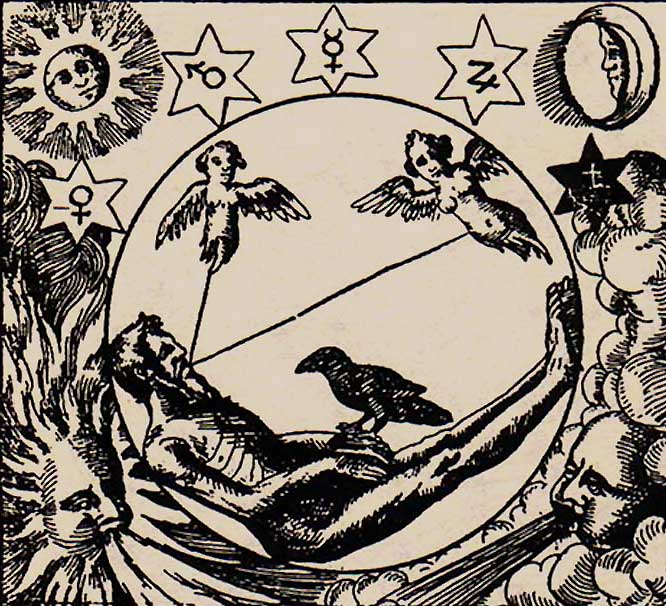~ author introduction ~
HOW THIS BOOK WORKS
The Embodiment Bias of Experiential Astrology
Numerous systems of astrology exist throughout the world and almost every culture has its own star-mapping system informed by its history, mythology, and cultural bias. Due to so many cultural and religious differences, these astrological systems often disagree and even find fault with each other. The system I have been studying and practicing since 1985 is Western Tropical Astrology. As a European born in Finland and raised in eastern Canada and in California, Western Tropical felt like a good fit.
As a 12th house Scorpio Sun conjunct Scorpio Ascendent, I enjoy exposing and exploring the contraries within human nature, not as dualities but as complex expressions of a larger changing totality. I view each astrological sign and planet as having a bright side and a dark side, its brilliance and its shadow. I also assume that all twelve signs exist within each individual as different facets and dimensions of personality at various degrees of expression and latency. We may be more multi-faceted than we think or, more to the point, we may be more multi-faceted than we can think.
I don’t believe the planets control our fates. I interpret planetary symbols in the horoscope as a colorful language of living forces residing within the Body itself and in the world we inhabit. These forces seem autonomous, meaning they are not always under conscious control. More often, they find expression through us without our conscious awareness. When these forces can be recognized and accepted, they can be more consciously integrated into our personalities - if that’s what we want. These forces are symbolized by the planets, the Sun, and the Moon in the natal horoscope. Using this map to gain access to the vital territory of our actual lives forms the basis of this book and why it’s called Experiential Astrology (hereafter referred to as XA).
This book was written for those with a rudimentary grasp of the Signs, Planets, Houses, and Aspects and an eye for new ways of seeing and thinking. The origins or the ancient history of astrology will not be covered nor will any arguments be presented for or against its academic legitimacy. Certain ideas here will contradict tradition, such as the notion that some planets are “exalted” or in “detriment” or “in their fall” depending on the sign they’re in or that there’s such a thing as a “bad” or “horrible” chart; nonsense! Here in the 21st century Aquarian age, these archaic ideas appear to me as symptoms of a previous Piscean Age pathological victim bias. The aim of this book is to offer methods, insights, and opportunities to test and determine the value and purpose of astrology for yourself. And maybe dismantle the victim archetype within you as you go.
The study and practice of XA requires critical thinking, intuition, and imagination. Critical thinking can help discern the difference between the map and the territory, the chart, and the actual life it represents. Intuition supports a more direct experience of the living forces represented by the planetary symbols. Direct experience means experience minimally mediated by dogma, rigid and overly literal thinking, morality, and the compulsive need to be right. When critical thinking and intuition can work together in more meaningful ways, imagination is free to explore more poetic interpretations of astrology. Sometimes an uncanny accuracy follows a more poetic interpretation, something that makes no sense to the analytical mind, yet occurs nevertheless.
Everyone has a bias informing how they know truth, whether they’re aware of that bias or not. In astrological language there can be at least twelve ways to know truth, symbolized by Jupiter, its house, and sign. For example, my natal 6th house Jupiter in the fixed earth sign of Taurus symbolizes how I know truth through the senses in somatic, embodied experiences and by its utility and application. This also expresses the bias behind this book. It’s a pragmatic philosophical outlook that may or may not appeal to those biased by more heavily theoretical orientations. As Taurus also symbolizes what we value and find worthwhile, whatever I find worth learning typically becomes integrated, embodied in me, and put to work.
THE PARATHEATRE INFLUENCE
I never went to Astrology School. I confess to not always knowing why or how astrology works. Whatever I do know about astrology comes from personal experience with interpreting well over a thousand charts since 1985. I also confess to being on a parallel path of Paratheatre (group ritual work) for over forty years (refer to my book, “State of Emergence”; The Original Falcon Press). Though astrology was never incorporated into Paratheatre, the universal forces symbolized in any horoscope were always present in this group ritual work where we learned to access, experience, and express these forces in movement, dance, and vocal creations that were often cathartic and transformative.
Universal forces, such as the powers of Earth, Water, Fire, and Air — substances within the Body itself — are a mainstay in paratheatrical and astrological work alike. Paratheatre nurtures and expands the faculties of intuition and imagination through a series of somatic methods for “making the unconscious conscious” within a physical discipline of self-expression. Through Paratheatre, I came to experience the physical body, with its many invisible, interactive bio-systems, as the embodiment of the so-called Subconscious mind.
By accessing and expressing the internal landscape of impulses, tensions, emotions, sensations, images, and the deeper ancestral and archetypal currents, paratheatrical methods opened up an internal spectrum of humanity - the beautiful and the grotesque, the brilliance and the ignorance, the love and the fear, the weak and the strong. XA encourages firsthand experience of the living forces symbolized in the horoscope. As such, this approach can be loosely defined as animistic and shamanic. Not saying I’m a shaman, though some may think so.
Throughout four decades of ongoing Paratheatre work I eventually came to understand my own chart not just as a map but as a kind of door to a confluence of forces interacting with each other and the world beyond. This experience increased my empathy when interpreting the charts of others. I don’t just read charts but experience something of the world each chart represents. This exhausting process is also why I can only interpret one chart per day. My job as “astrologer” is all about languaging my perceptions. When words fail, as they often do, I examine the client’s natal Mercury placement for insight on how they might process information to learn how to “speak their language”.
THE PRICE OF KNOWLEDGE
This is not an “Everything You Need to Know About Astrology” book nor does its author claim any final authority on the topic. Though some traditional astrological ideas are presented, this book intends to rock that boat and get you, the reader, a bit wet. A few secrets will be shared here that some may regret knowing about. Such is the price of knowledge. Whatever you know, or think you know, gets constantly tested against the greater unknowns of life itself.
As all true knowledge-keepers eventually discover, the more we know, the more we realize how much we don’t know. Gaining knowledge can be humbling that way and if it’s not, you’re still probably eating the menu instead of the meal. This is why critical thinking can be necessary for telling the difference between an idea or belief and the reality and experience it represents; the map is not the territory. In this way, XA can be used to fine-tune our BS detectors (BS also stands for Belief System).
If you can point your BS detector at yourself, you may start seeing through the BS of the world, and the BS of other people. However, some things once seen cannot be unseen. As you discover more truth about yourself, the world and others, it’s up to you to find ways to live with more truth. Truth can be cruel. Telling the truth without compassion can feel just like cruelty. Whether that’s the self-torment of not living up to some Ego ideal or torturing others with your big truths posing as “absolutes”, there’s no need to make any truth more serious; truth is already serious enough by itself.
My process of reading the charts of others follows two-steps: 1) I say what I see and 2) I say what that means to me in the most honest and compassionate ways I know how. Based on client feedback, my astrological interpretations now register anywhere between a 70-80% accuracy rate. This heady percentage can easily persuade others, as well as myself, that I may be right most of time. Whether that’s true or not, I don’t like the feeling of being right most of the time. As an artist (of cinema, theatre, music), just the idea of being right most of the time makes me laugh and then makes me nauseous. In my art life, I have come to know uncertainty as a creative state and need to remain open to unknowns just to stay creative.
Astrology can be crazy-making and the mental health of more obsessive and hyper-analytical astrologers can be at risk. To sustain my mental health, I minimize the self-delusion of “being right most of the time” by thinking of all perceptions as gambles. I rely on client feedback to determine the degree any of my interpretations are true or not for them; the customer is always right or at least, I hope so. I also interpret everything in a chart as tendencies, not absolutes. Though some tendencies can appear strident enough to simulate absolutes, I still consider them tendencies. Those looking for absolute answers to Life’s Big Questions may be disappointed with this book. For those who can still think for themselves and have the imagination to keep dreaming, this book was written for you.
- Antero Alli
Portland Oregon
October 3, 2021
 ......
......
SCORPIO and TAURUS
by Bat St. Chip (from the book)

